Ski: Season Nexus, 183 cm
Test Location: Mt. Crested Butte, CO
Days Skied: 11
Available Lengths: 167, 177, 183, 189 cm
Blister’s Measured Tip-to-Tail Length: 181.5 cm
Stated Weight per Ski: 1990 grams
Blister’s Measured Weight per Ski: 2073 & 2074 grams
Stated Dimensions: 137-106-133 mm
Blister’s Measured Dimensions: 135.4-105.2-131.9 mm
Stated Sidecut Radius (183 cm): 17.5 meters
Measured Tip & Tail Splay (ski decambered): 53 mm / 48 mm
Measured Traditional Camber Underfoot: 5 mm
Core: Karuba + Fiberglass Laminate + Stainless Steel Tail Insert
Base: Sintered
Factory Recommended Mount Point: -2.65 cm from center; 88.1 cm from tail
Boots / Bindings: Tecnica Mach1 130 LV & MV, Atomic Hawx Ultra 130 S / Tyrolia Attack 13 / mountainFLOW All-Temp
[Note: Our review was conducted on the 20/21 Nexus, which returned unchanged for 21/22, apart from new length options.]

Intro
In 2020, Eric Pollard made a surprising announcement: after more than 20 years with Line Skis, he moved on and launched a new ski and snowboard brand with rider, Austin Smith. That brand is Season Equipment, and you can learn more about the brand from both Eric and Austin on our Blister & GEAR:30 podcasts.
We’ve already reviewed the Season Aero and Forma skis, and will have a full review of the Nexus snowboard in the coming weeks. But now, it’s time to discuss the Season Nexus ski, the one that’s designed for every day skiing in mixed conditions.
Brand Background: Season Equipment
Given that Season was publicly launched just over a year ago, it’s worth providing some background info.
Here’s how the two founders sum up their approach to the Season product lineup:
“I want equipment that is designed to span multiple seasons, years, decades. Let me know how we did in 2040.”
– Austin Smith
“A concise offering of versatile shapes that transcend categories. This translates to better quality and an easier choice for our customers. These three models are the result of a lifelong exploration into shape, width, length, sidecut, flex, camber, and materials.”
– Eric Pollard
Browsing Season’s site, there’s an obvious theme of simplicity. They make three skis, and three snowboards. The “Aero” ski and board are narrower and designed with firmer conditions in mind; the “Forma” ski and board are wider, swallow-tailed, and designed for softer snow; and the “Nexus” ski and board slot in the middle. The new 21/22 Kin ski and board are designed to be playful and accessible, and their Splitboard is a split version of the Nexus board. Their graphics are minimal, with the goal of them not seemingly becoming obsolete next, well, season.
Every product is designed to be gender-neutral, with ski lengths currently ranging from 158 cm to 189 cm, and boards ranging from 143 cm to 164 cm.
It’s also worth noting that Season and evo have collaborated to offer the following at evo stores for those who purchase a Season ski or board:
- Unlimited complimentary machine wax service for the lifetime of the product.
- Complimentary Standard Tune every Fall for the lifetime of product.
- 30% off additional repair services for the lifetime of product.
- Complimentary first mount for skis & snowboards
Construction: Season Nexus Ski
The Season Aero, Nexus, and Forma ski models feature a lightweight karuba wood core, fiberglass laminate, stainless steel tail inserts for added durability, and a full, 7.5mm-wide sidewall construction. The snowboards are quite similar overall in terms of construction, with one of the main differences being that they use a poplar/karuba wood core. And then the Aero ski features two layers of titanal in addition to the standard wood core and fiberglass laminate.
Talking to Season’s engineer, Andy Hytjan (who Blister Podcast listeners might know from episodes #8 and #27), he made a point to highlight the rounded top sheet / sidewall seam on their skis, which apparently required some pretty involved CNC machining of the molds to achieve. While that’s not typically something I think about or notice, I will say that these skis and boards do feel and look really, really nice. I’m sure I have a few dozen shards of fiberglass and metal permanently embedded in my hands after handling and mounting so many skis, but the Season gear just feels … smooth. It’s a nice touch. Also, having now skied several Season skis for well over a season, they do seem to be some of the best I’ve seen when it comes to top sheet and sidewall durability. The tips have plenty of tiny chips, but no big shards have come off and they look better than the vast majority of skis I’ve used for a similar amount of time.
Anyway, the Season skis use a fairly light construction overall, though nothing wildly out of the ordinary by today’s standards — their overall construction is mostly tried-and-true materials. Now, how is that all implemented in the Nexus ski?
Shape / Rocker Profile
If you’ve seen Eric Pollard’s skis from the past decade or so, the shape of the Nexus will probably look familiar. It doesn’t have dramatically tapered tips or tails, and Season says the effective edge of the 183 cm length we have is 149 cm. While that may seem short on paper, it’s not when you look at other playful, ~106mm-wide skis like the Dynastar M-Free 108 and Sego Big Horn 106, which feature a shorter effective edge / more tapered tips and tails.
But for those who are wondering, the Nexus (or the other Season skis, for that matter) is not just one of Pollard’s Line skis with a black top sheet. And one of the first indications of this is the Nexus’s rocker profile.
For a playful, ~106mm-wide ski, the Nexus’s rocker lines are on the shallower side of things. It also doesn’t have a ton of tip or tail splay, though I’d still call its tail a twin.
The Nexus still has a deeper tail rocker line (and much more tail splay) than most directional skis in this class. But compared to skis like the Moment Wildcat 108, Whitedot Altum 104, Volkl Revolt 104, and Line Sir Francis Bacon, the Nexus has a longer cambered section and shallower rocker lines.
All three of the Season skis fit this description to a varying degree — they’re not radically rockered. They all also have a lot of camber underfoot, with the Nexus’s coming in at 5 mm.
Flex Pattern
Here’s how we’d characterize the flex pattern of the Nexus:
Tips: 7-7.5
Shovels: 8-8.5
In Front of Toe Piece: 9-10
Underfoot: 10
Behind the Heel Piece: 10-8.5
Tails: 8-6.5
Another surprise: the Nexus ski is not a particularly soft ski. In fact, none of the Season skis really are.
That’s not to say the Nexus is a 2×4. Cause it’s definitely not. Instead, it has a really nice, pretty symmetrical-feeling flex pattern that’s a bit stiffer at the ends than other playful skis, and that smoothly and quickly ramps up to a strong midsection.
The Nexus is significantly stiffer at the tips and tails than the current Line Sir Francis Bacon, and its flex pattern doesn’t feel super far off from that of the Volkl Revolt 104, though the Nexus feels stiffer in front of and behind the bindings compared to the Revolt 104.
Sidecut Radius
One thing that seems to have remained consistent with many Pollard skis over the years is sidecut radii that are on the tighter end of the spectrum. That general trend holds true with the Season skis.
The 183 cm Nexus has a stated sidecut radius of 17.5 meters, which isn’t as short as the Line Sir Francis Bacon, but is notably tighter than the radii of skis like the Moment Wildcat 108, Whitedot Altum 104, and Sego Big Horn 106.
Mount Point
The recommended mount point on the Nexus is about 2.6 cm from the true center of the ski.
Compared to the whole market, that’s quite close to center, and similar to skis like the Revolt 104, Line Sir Francis Bacon, K2 Reckoner 102, and Prior Northwest 110. It’s a lot closer to center than most directional skis, and also “playful directional” skis like the Moment Wildcat 108 and Dynastar M-Free 108.
That said, there are a few marks on the Nexus that are in front of and behind that recommended line, so we tried it mounted at a few different spots during our time on it.
Weight
Overall, the Nexus ski is around the middle of the pack in terms of weight. It’s not quite as light as the K2 Reckoner 102, 4FRNT Devastator, Line Sir Francis Bacon, or Moment Wildcat 108, but it’s notably lighter than some of the more damp options in this class like the Sego Big Horn 106, Dynastar M-Free 108, Icelantic Nomad 105, Shaggy’s Ahmeek 105, and J Skis Hotshot.
For reference, here are a number of our measured weights (per ski in grams) for some notable skis. We’ve also included the other two skis in Season’s lineup. Keep in mind the length differences to try to keep things apples-to-apples.
1800 & 1804 Head Kore 105, 184 cm (21/22)
1806 & 1862 Armada Tracer 108, 180 cm (19/20–21/22)
1820 & 1821 Majesty Havoc, 186 cm (20/21–21/22)
1848 & 1903 Line Sick Day 104, 186 cm (16/17–21/22)
1875 & 1881 Line Sir Francis Bacon, 184 cm (19/20–21/22)
1905 & 1919 J Skis Slacker, 188 cm (20/21–21/22)
1920 & 2006 RMU North Shore YLE 110, 186 cm (21/22)
1947 & 2011 4FRNT Devastator, 186 cm (20/21–21/22)
1951 & 1953 Elan Ripstick 106, 188 cm (20/21–21/22)
1951 & 1957 RMU Apostle 3.0 106 Wood, 184 cm (21/22)
1964 & 1972 Moment Deathwish, 184 cm (19/20–20/21)
1970 & 1993 Moment Deathwish 104, 184 cm (21/22)
1993 & 2026 Black Crows Atris, 184.2 cm (19/20–21/22)
1999 & 2020 Rossignol BLACKOPS Sender Ti, 180 cm (20/21–21/22)
2005 & 2035 Liberty Origin 106, 187 cm (19/20–20/21)
2008 & 2065 Wagner Summit 106, 186 cm (20/21–21/22)
2011 & 2028 Moment Wildcat 108, 184 cm (19/20–20/21)
2011 & 2046 Elan Ripstick 106 Black Edition, 188 cm (21/22)
2022 & 2046 DPS Foundation Koala 103, 184 cm (21/22)
2034 & 2052 Blizzard Rustler 11, 188 cm (17/18–21/22)
2046 & 2120 Black Crows Corvus, 188 cm (18/19–21/22)
2073 & 2074 Season Nexus, 183 cm (20/21–21/22)
2079 & 2105 Kastle FX106 HP, 184 cm (19/20–20/21)
2096 & 2100 Salomon QST 106, 181 cm (19/20–21/22)
2097 & 2113 DPS Alchemist Wailer 106 C2, 189 cm (19/20–20/21)
2110 & 2119 Moment Wildcat 108, 190 cm (19/20–20/21)
2113 & 2121 Moment Meridian, 187 cm (16/17–20/21)
2112 & 2125 4FRNT MSP 107, 187 cm (18/19–21/22)
2116 & 2181 Faction Dictator 3.0, 188 cm (19/20–21/22)
2120 & 2134 Blizzard Rustler 10, 188 cm (19/20–21/22)
2145 & 2167 Sego Big Horn 106, 187 cm (20/21)
2153 & 2184 Rossignol BLACKOPS Sender Ti, 187 cm (20/21–21/22)
2165 & 2211 K2 Mindbender 108Ti, 186 cm (19/20–21/22)
2165 & 2219 Icelantic Nomad 105, 191 cm (19/20–20/21)
2170 & 2180 Dynastar M-Free 108, 182 cm (20/21–21/22)
2232 & 2242 Blizzard Cochise 106, 185 cm (20/21–21/22)
2232 & 2244 ON3P Woodsman 108, 187 cm (19/20)
2295 & 2344 J Skis Hotshot, 183 cm (20/21–21/22)
2302 & 2342 Dynastar M-Free 108, 192 cm (20/21–21/22)
2312 & 2386 Prior Husume, 188 cm (17/18–20/21)
2321 & 2335 Fischer Ranger 107 Ti, 189 cm (19/20–21/22)
2353 & 2360 Volkl Katana 108, 184 cm (20/21–21/22)
2449 & 2493 J Skis Hotshot, 189 cm (20/21–21/22)
Alright, now onto how the Nexus actually performs on snow:
Bottom Line (For Now)
With the Nexus ski, Season Equipment and Eric Pollard have maintained some aspects of ski design that we’ve come to expect from Eric, but also made some significant changes that make us really curious about this new ski.
I’ll be skiing the Season Nexus and Aero skis today and this weekend, and Blister Members can now check out our Flash Review of the Nexus. So stay tuned for more, and then we’ll be posting our full reviews once we’ve spent more time on these new skis and boards.
Flash Review
Blister Members can read our Flash Review of the Nexus for our initial on-snow impressions. Become a Blister member now to check out this and all of our Flash Reviews, plus get exclusive deals and discounts on skis, and personalized gear recommendations from us.
FULL REVIEW
Over the past two seasons, we’ve gotten the Nexus ski (stay tuned for our review of the board version in the near future) in a very wide range of conditions, from late-spring slush to early man-made groomers and a mix of everything in between.
Soft Chop
Luke Koppa (5’8”, 155 lbs / 173 cm, 70 kg): The Nexus is designed for “mixed conditions,” and the soft chop we typically get here in Mt. Crested Butte is a great example of those conditions.
When skiing a mix of pushed-around soft snow and a firmer base underneath, the Nexus handles quite well overall. This ski has enough weight behind it to avoid getting knocked around super easily, but it still feels pretty quick and surprisingly loose in soft conditions.
There are several better options in the all-mountain freestyle category if stability in chop and crud is a high priority. But the Nexus also isn’t at the bottom of the stability spectrum, either.
In practice, this meant I could ski pretty fast pretty comfortably on the Nexus in choppy conditions, but it also made quick adjustments fairly easy. It’s not an extraordinarily loose and nimble ski like, say, the RMU Apostle 106, but the Nexus hits a nice middle ground in terms of playfulness and stability. I’d say the only area where it started to make me really want to dial back my speed was in particularly deep chop, where I wished for a bit more support from the front of the 183 cm ski.
Dylan Wood (5’10”, 155 lbs / 178 cm, 70 kg): Agreed. The Nexus occupies a pretty versatile middle ground in terms of its stability in soft chop; there are several options that are more stable, but the Nexus is a bit easier to flick around and more nimble than those skis. There are also several looser and quicker options, but the Nexus stays more composed in rough snow.
I also found the front of the Nexus to be lacking in support in chop. It is not a ski that you can really drive through piles of soft snow and make big, fast turns. Rather, I found it fun to pop and slash around on, taking advantage of the ski’s balanced swing weight and somewhat surfy feel.
Groomers
Luke: On fairly soft or freshly groomed slopes, the Nexus is a lot of fun to carve.
One thing that took a bit of getting used to was the Nexus’s more centered (-2.6 cm from true center) mount point. Even when experimenting with the bindings pushed farther back (more on that later), it feels like a ski that prefers a more upright, centered stance. I noticed this the most on piste, where I’m accustomed to really driving the shovels of skis to initiate a turn. With the Nexus, it felt like I could initiate each turn more from the ball of my foot.
Initially, that felt a bit odd. But after a few days, I was confidently laying down fairly hard carves on this ski, and on fairly soft groomers, it was a blast. In most scenarios, the Nexus is happy to make turn shapes around GS size, but I can bend it into tighter turns on soft slopes, or let it run into bigger arcs with little drama. With its minimally tapered tail and fairly shallow rocker lines, the Nexus will even finish turns pretty powerfully through the tail and produce a nice amount of energy.
That said, this is not my favorite ski for icy, scraped-off slopes. The Nexus is predictable to slide and skid in those conditions, but it does not offer the quick turn initiation or inherent edge grip to encourage me to really lean into the ski and try to carve it when conditions are very smooth and firm. Now, I’d say that about most ~105mm-wide all-mountain-freestyle skis, but there are some exceptions, such as the Whitedot Altum 104.
Dylan: Luke hit a lot of the main points here. The Nexus is a ski that is most comfortable in relatively soft conditions, and this applies to groomers as well.
The Nexus does feel quite versatile in terms of turn shapes. It feels most comfortable in a GS turn, but by casually riding its sidecut, it is happy to make bigger Super G turns without wanting to hook up unpredictably. Its softer flex pattern also makes it relatively easy to bend this ski into tighter turns, and it has a pretty energetic feel when pushing it hard on piste
I feel it is important to reiterate the stance that the Nexus prefers. This is not a ski that can be pushed really hard into the shovels, and this applies to carving. The Nexus reminded me of the also forward-mounted Black Crows Mirus Cor in the sense that it prefers a more side-to-side carving style with a more neutral, upright stance. I didn’t grow up with a racing background and quite honestly only learned how to bend a ski in a carved turn around 4 years ago, so this more centered carving style was actually pretty intuitive to me after spending most of my life on center-mounted twin tips. However, if you are used to loading up the front of your skis in carved turns, the Nexus will take some getting used to.
Moguls, Trees, & Tight Terrain
Luke: I didn’t initially think the Nexus was going to be all that easy in tight spots. It’s not extremely light by today’s standards, it doesn’t have much tip or tail taper, and its rocker lines are fairly shallow compared to other skis in its class.
Fortunately, I ended up finding the Nexus to feel both pretty easy and adaptable in bumps and trees. It’s much easier to release and pivot than I expected when I first saw it, and I found myself feeling that its flex pattern was supportive enough for me to ski hard without feeling punishing.
The Nexus’s swing weight feels very manageable to me; I wouldn’t call it notably sluggish or exceptionally quick. And while I found the Season Aero to sometimes feel punishing with its long tail, I haven’t really felt that way about the Nexus — it lets me get away with some sloppy technique while still allowing me to recover. I also noticed that, with the Nexus’s more centered mount point and balanced ride, I found myself more prone to try to find little gaps between bumps because of how natural the ski felt on takeoffs, in the air, and on landings.
Dylan: I don’t have much to add here; the Nexus is a maneuverable and surprisingly intuitive ski in moguls and other tight terrain. The ski’s moderate weight is masked well by its centered mount point, creating a very balanced feel and manageable swing weight. I also found that the Aero’s long, cambered tail was pretty demanding in tight terrain, but the Nexus’s tail is much easier to wash out and doesn’t immediately punish you for backseat skiing.
Firm Chop / Crud
Luke: Similar to Soft Chop, the Nexus sits around the middle of the pack when it comes to overall performance in very firm and rough conditions.
The Nexus does not feel harsh or “ping-y,” but it’s also certainly not the ski I’d pick if skiing as fast as possible in crud was the goal for the day. Rather, the Nexus offers good enough suspension to feel fairly comfortable in otherwise uncomfortable conditions, and it’s easy enough to ski that you can casually make your way through them to get to better snow. It’s neither a super stable charger, nor some ultra-twitchy ski that’s scary in anything other than consistent snow.
Dylan: I found the Nexus to feel a bit more damp than its weight would suggest, but this still didn’t make it an ideal ski for rallying hard on subpar, firm snow. Rather, the Nexus got through crud and variable snow well enough for me to not have a second thought about skiing across a sun-baked slope to access a pow stash elsewhere.
Playfulness
Luke: The Nexus feels like a ski that was created, at least in part, with freestyle skiing in mind. It’s designed around a very centered mount point, its dimensions are pretty symmetrical, and it feels very natural when skied with a more playful style.
The Nexus feels very balanced in the air and on the snow, it skis switch really well, it’s easy to bend, and it’s pretty easy to throw sideways and slash around. It’s not the absolute surfiest or lightest ski in its class, but I can’t imagine many people will find it lacking in the general “playfulness” category.
Dylan: Yep, freestyle skiers who like to carve up the mountain have plenty of reasons to consider the Nexus, especially if you ski with a very centered stance. It is very poppy and feels balanced in the air, resulting in an ideal platform for leaving the earth momentarily and throwing a shifty, grab, flip, or spin.
If “playfulness” to you means throwing your skis sideways at every chance you get, there are looser options out there, like the 4FRNT Devastator, that you’d likely enjoy more. Additionally, the Nexus’s pretty narrow, pointy tips can be unpredictable in nosebutters, especially really high-angle ones (they are unnoticeable in more low-angle butters, with your tails closer to the snow). Other than that, the Nexus is about as playful as they come.
Mount Point
Luke: I’ve now skied the Nexus mounted at a variety of spots, from the recommended line (-2.6) to about 1 and 2 cm behind that line (-3.6 and -4.6 cm from true center).
In the end, I personally preferred it at -1 cm from recommended (-3.6 cm from true center). That let me lean into the shovels just a bit more than the recommended line, without compromising its balanced feel and carving performance. Moving back to -4.6 ended up making the ski feel just a tiny bit “off” on piste, like I wasn’t quite in the right spot of the ski’s sidecut or flex pattern.
However, it’s clear to me that this ski performs best when skied with a more centered stance. If you’re thinking you should mount it at, say, -8 cm from true center, I think you should be looking for a different ski, rather than trying to force this one to be something it isn’t. If, however, you like to ski with a fairly centered stance and still drive the shovels a bit (especially off piste), the Nexus can still work. It doesn’t feel as biased to an upright stance as, say, the Volkl Revolt 104 or old ON3P Jeffrey 108.
Dylan: I skied the Nexus exclusively on the line, mostly because it felt great to me there (again, I tend to carve with a more upright stance than Luke). It should work great for those who ski with a more centered stance and appreciate a balanced ski, but I strongly agree that if you are thinking “the Nexus looks cool, I wonder if I could mount it at -6 cm and enjoy it there,” you are likely looking at the wrong ski.
Who’s It For?
Luke: Skiers who want a playful, versatile ski that’s pretty quick and easy but that also offers pretty good suspension.
If you’ve always skied (and loved) skis with very rearward mount points (roughly -9 cm and farther back), you’re probably better off with something less center mounted. And if maximum edge hold and stability are what you’re after, you also have better options.
But if you instead want a ski that’s pretty maneuverable off piste, a lot of fun to carve on soft-ish groomers, and that lets you take a playful approach to the mountain, the Nexus certainly warrants a close look. Those who ski more centered than aggressively forward over their boots will likely appreciate it the most, but it could also serve as a quiver ski for those looking to add something a bit more playful and center-mounted to complement their more directional skis.
Bottom Line
The Season Nexus is designed to “perform every day, in all conditions.” And for the most part, it accomplishes that goal. It’s a ski that rarely feels out of place because of conditions or terrain, and especially for those who prefer a more balanced, playful ski, it’d make for a very good daily driver. And while it suits a playful skiiing style really well, it still offers good enough suspension and support to be pushed pretty hard when you feel like it.
Deep Dive Comparisons
Become a Blister Member or Deep Dive subscriber to check out our Deep Dive comparisons of the Nexus to see how it compares to the Season Aero, Season Kin, Line Sir Francis Bacon, RMU Apostle 106, DPS Foundation Koala 103, Dynastar M-Free 108, Moment Deathwish 104, Volkl Revolt 104, Moment Wildcat 108, Sego Big Horn 106, Blizzard Rustler 10, Black Crows Atris, Nordica Enforcer 104 Free, J Skis Hotshot, Head Kore 105, Line Sick Day 104, Whitedot Altum 104, 4FRNT Devastator, & K2 Reckoner 102.


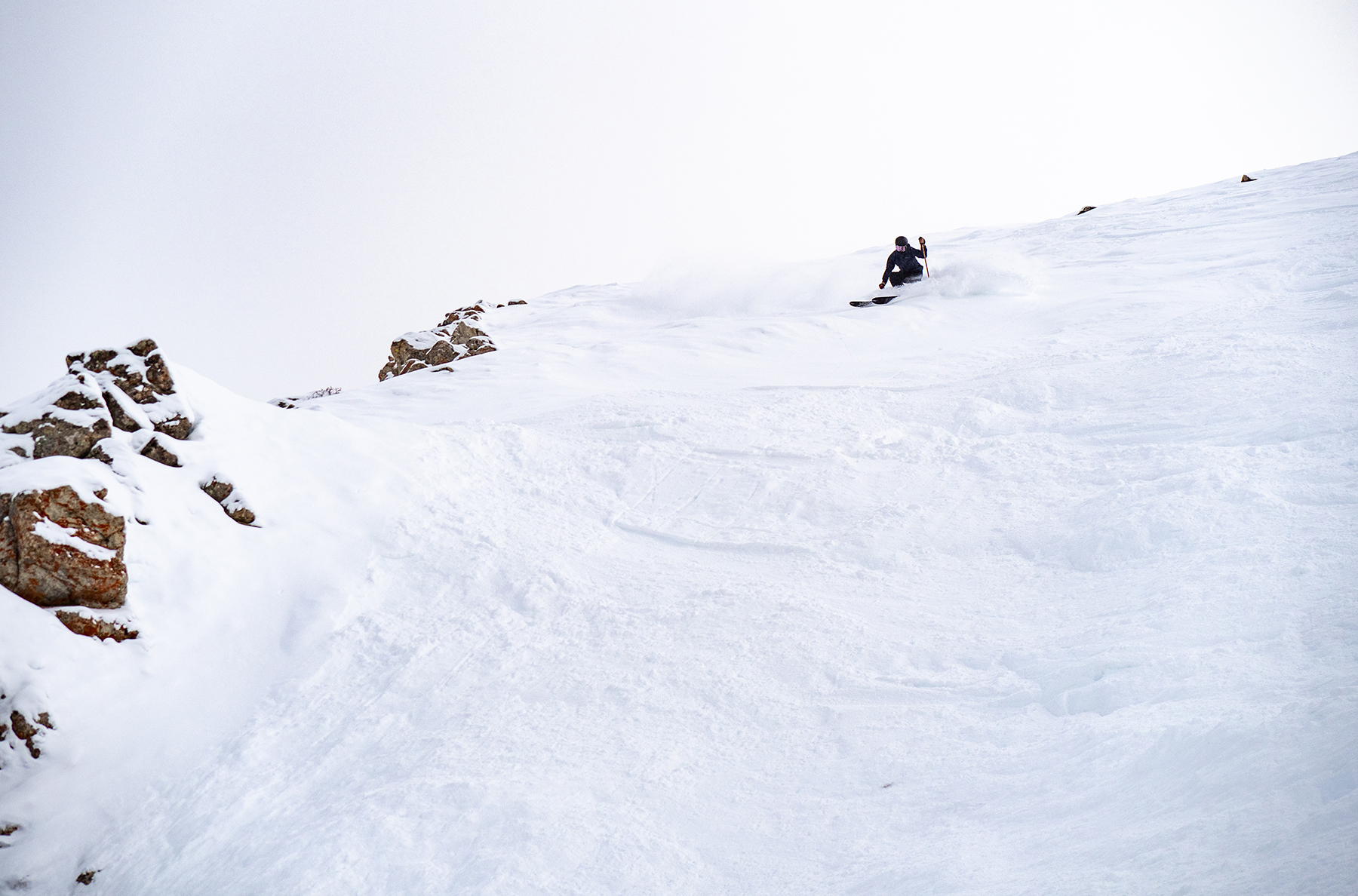
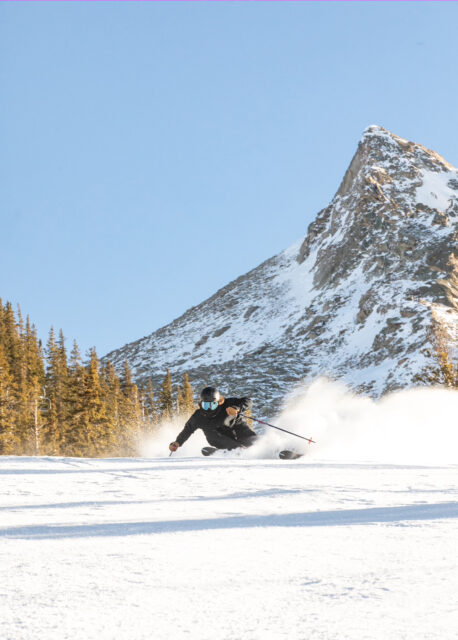
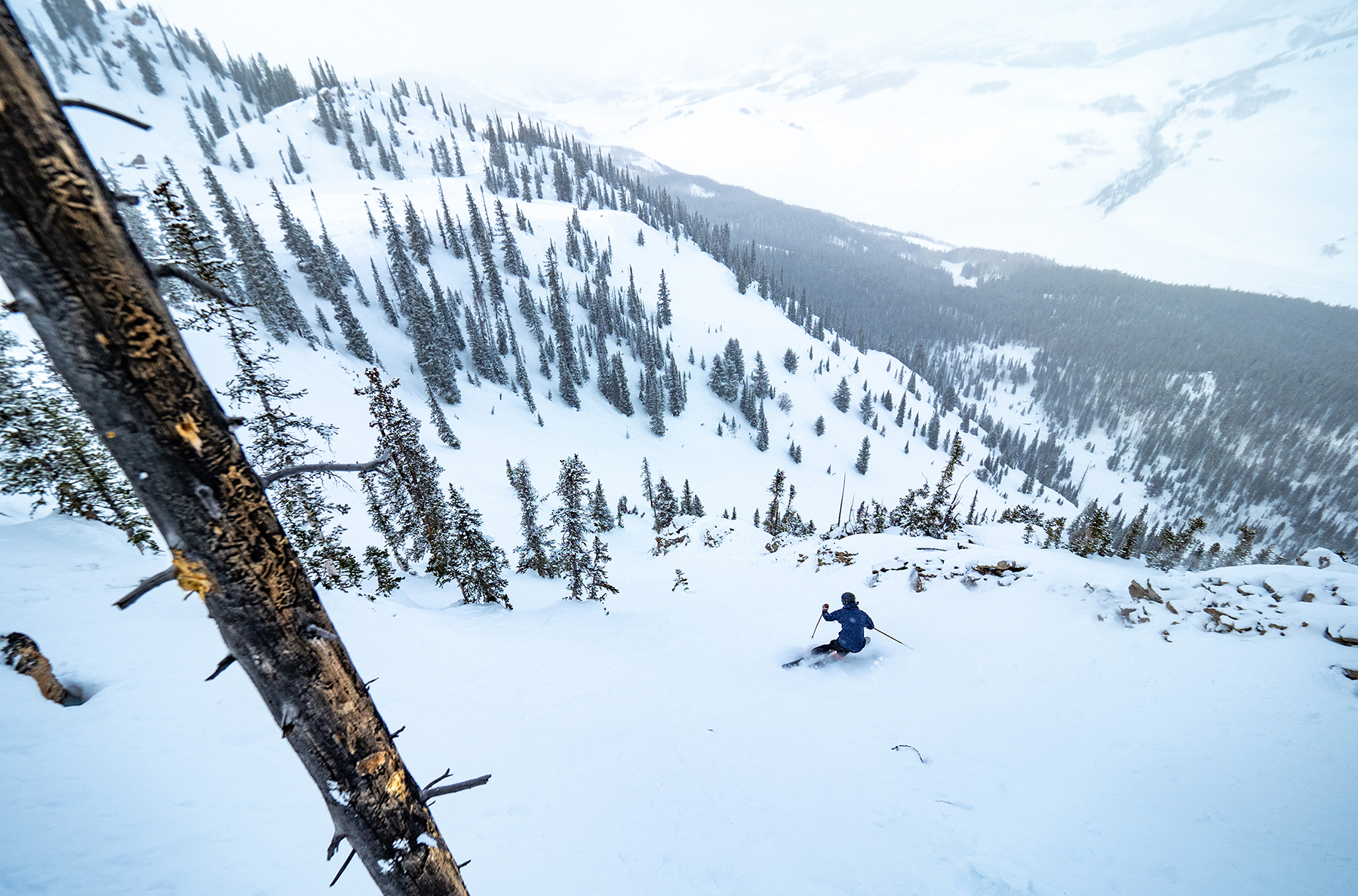
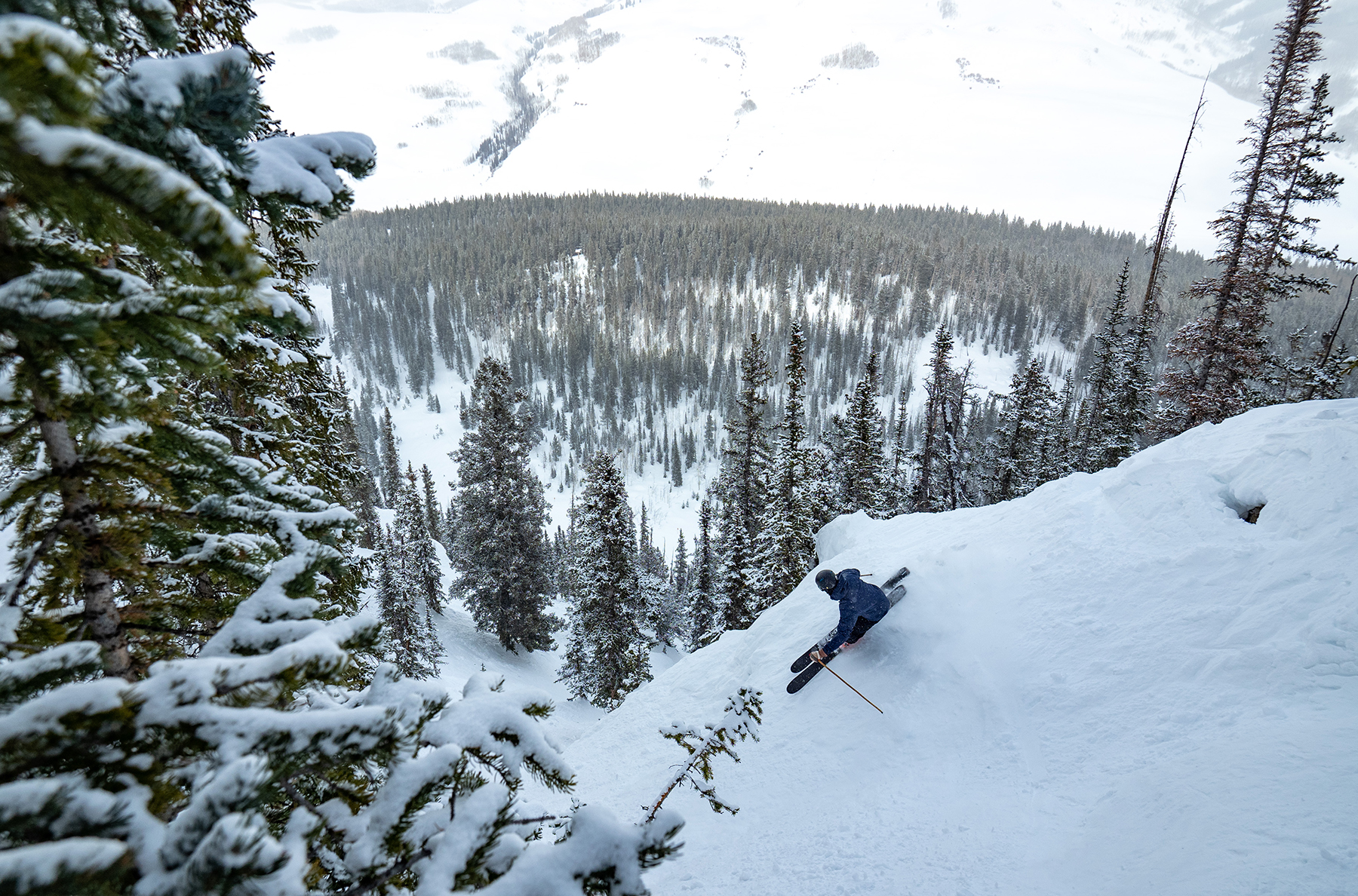
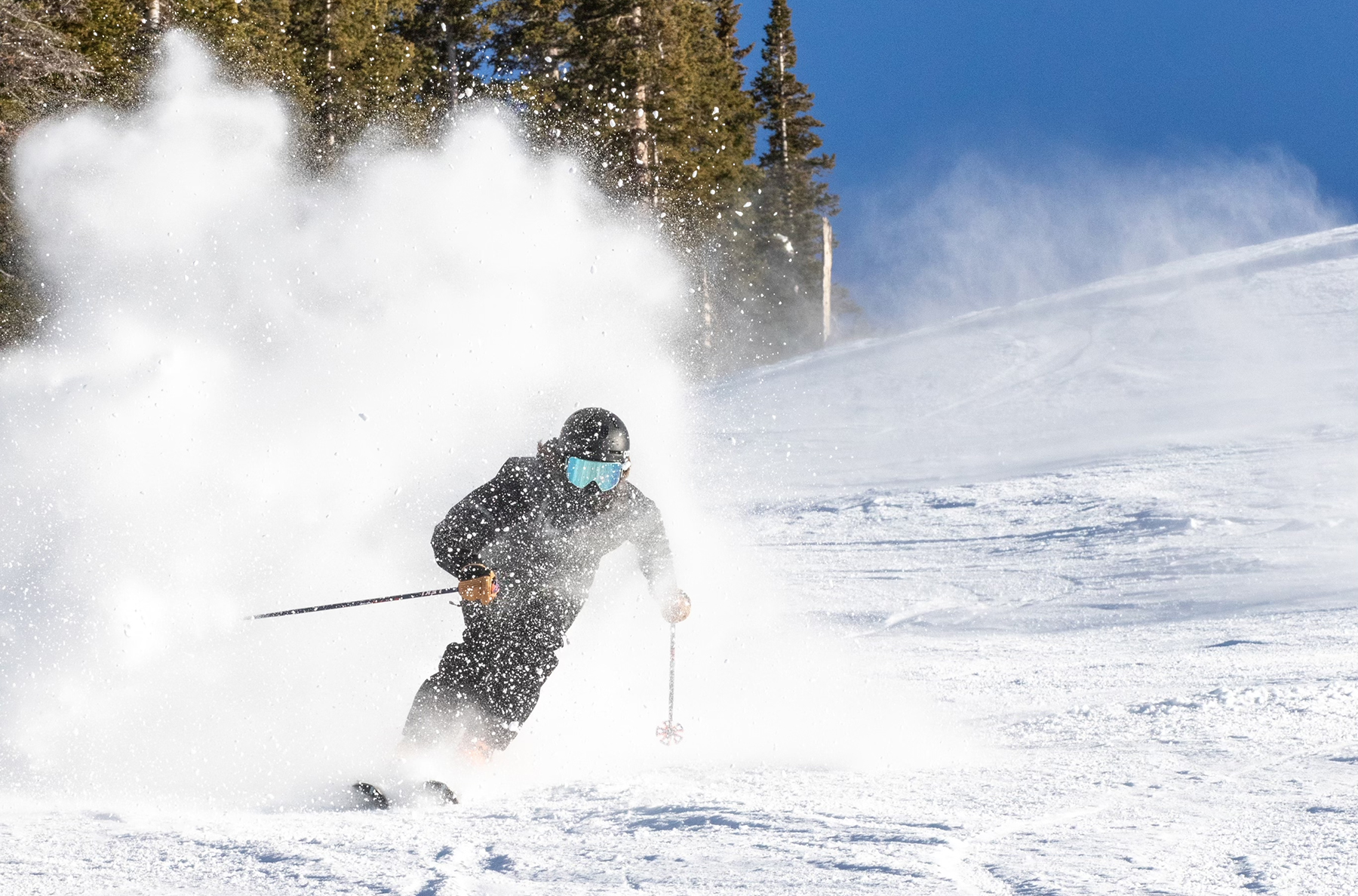
So pumped for this review!
Enjoy the rides!
Looking forward to hearing about all the Season skis.
These seem really cool, too bad they aren’t offered in any 6’+ friendly lengths
They are reportedly planning to offer longer lengths in the future, but are starting with a more limited size run for the initial launch.
Good to know!
Definitely been waiting for this review. Does it seem more comparable to the pre-2019 Bacon?
Just posted the Flash Review after my first day, including some thoughts on it vs. the current Bacon (I haven’t skied the older versions): https://blisterreview.com/flash-reviews/flash-review-season-nexus-ski
Cool hope they make a 190 version soon beautiful looking skis. Seems like pollard’s skis are always tough to get on if you’re over 6’0. Makes sense I guess he’s a small guy.
I just checked the site and they’ve added a 189, good news for us tall folks!
Have you tried them mounted a cm or two behind the line yet? The Formas are freakin awesome btw.
I’m really interested in the Season Nexus ski as it seems it would carve similar to the Bacon and have a poppy, playful feel, but more stable. I’ve also considered RMU apostle 106, Black Crows Atris, J skis vacation. (…or maybe I should look at something lighter as a 50/50?) Any comments or insight would be great.
Last year I purchased the Line Sick Day 104 186s as a 50/50 ski but realistically ski 80% in bounds. I skied them a few times and toured once. They’re too big for me though. I’m having a hard time maneuvering it in the PNW snow and in tighter spots. I came from 178 Sir Francis Bacons (10 years old)- still have them, and love em, but I need something a little more stable. I also have the Moment Wildcats as a pow ski. After skiing the Sick Days I realized; length aside, I enjoy a ski that pivots easier but can still bomb groomers sometimes or carve tight turns. The Season Nexus seems like it’s it!
Note: Season Eqpt recommended the 177, but I’m debating the 183.
Me: 5’10, 160lbs, advanced skier.
I already have the Cast system with Pivot bindings. Unfortunately, I need to get rid of the Sick Days now- any takers??? May sell with the Cast set up and switch to Shift binding.
Forgot to mention- the Bacons feel too short! Was thinking about mounting the Nexus another 2cm back from recommended line.
It’s interesting to see how different this take on the nexus is than other reviews online, especially Newschoolers review. They have multiple reviewers highlighting how good it is on icy groomers, and how bad it is at smearing and being loose. Might just have to buy one for myself now to find out!
I have a couple days on the Nexus now (pre season type terrain) and wanted to drop my opinions. I mounted mine -1 from recommended, and I feel like the Nexus is quite natural to carve. I can be pretty neutral and lay it over or drive with a more forward stance and bend the ski into a variety of turn shapes. I found the Nexus quite impressive on some variably icy groomers and it held phenomenally on that challenging snow. It also feels quite loose when I wanted it to be, very easy to butter as a larger guy (220, 6 foot) and fantastic for surfing around on the variable side hit riddled outside of the trails available. I can’t wait to get after some steeper lines on the nexus and I think it’s exactly what I was looking for.
What length did you get?
I got the Nexus as my “jack of all trades, master of none” ski. The ski is a great choice for a one ski quiver or middle ground ski. It carves well on groomers, feels nimble in trees, and has decent float. As the review mentions, it’s a great freestyle ski. It cuts through soft, windblown crud like nothing and is stable at medium-high speeds. If you are skiing deep powder, it’s ok but again, that’s not what it’s designed for (probably opt for a wider, more playful ski).
Given the added bonuses of tune ups and waxing, it’s a great choice for workhorse ski.
What about powder perfomance?
Thanks for the great review. How would you compare these to the Jskis Hotshot?
How does it perform in powder?